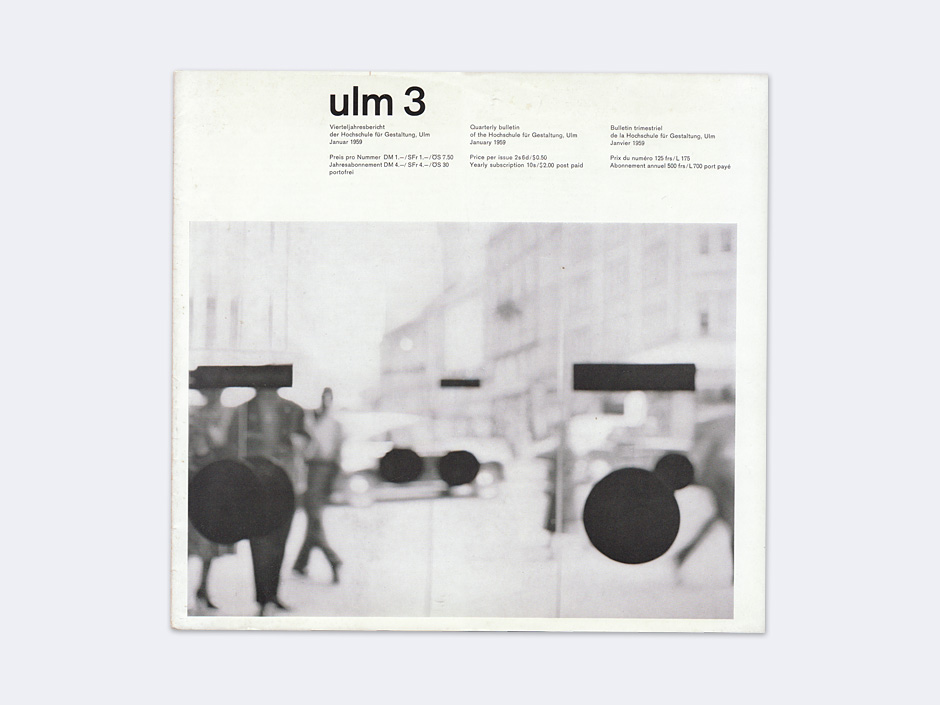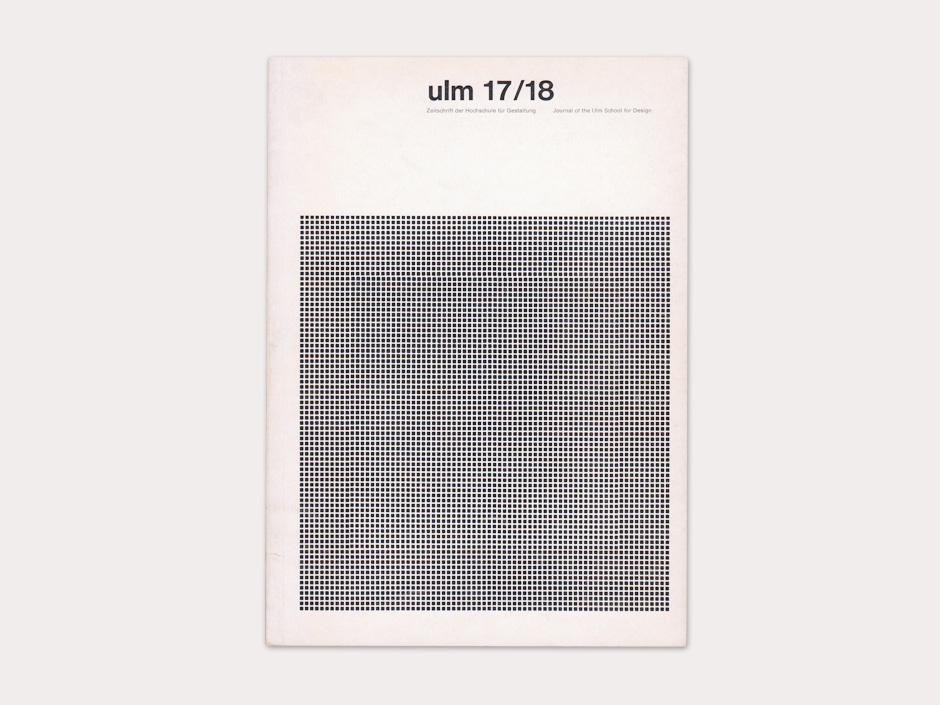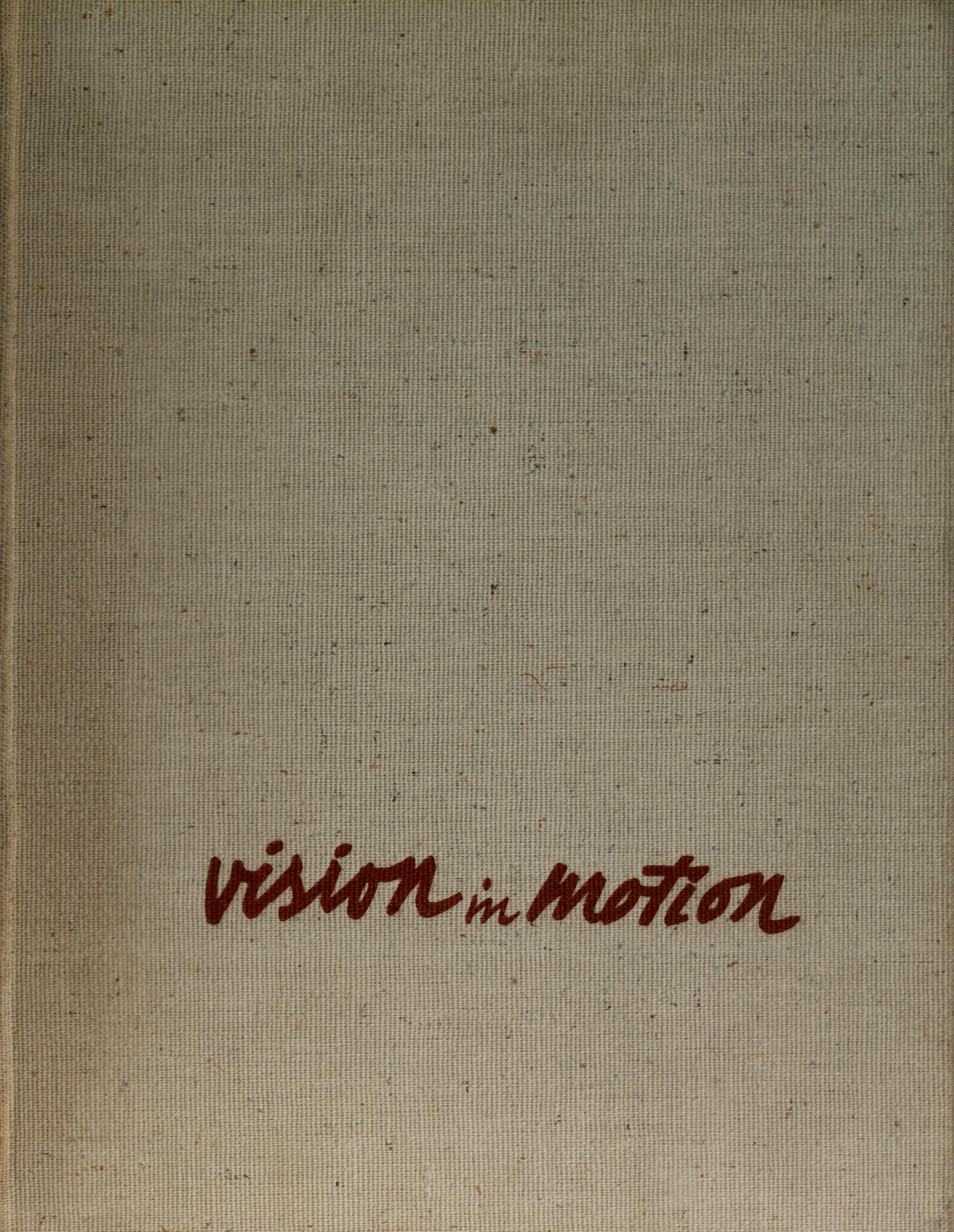René Spitz: The View Behind the Foreground: The Political History of the Ulm School of Design, 1953-1968 (2002) [EN, DE]
Filed under book | Tags: · art education, design, design history, germany, industrial design, information design, politics

“The Ulm School of Design (HfG) has a reputation as the place which, after the Bauhaus, has had the most lasting influence not only on the design of industrially manufactured goods and of services but also on designer training. As a private institution the HfG was different from other contemporary design-focused training centers in that its goal was design based on the humanities and natural sciences, rather than traditional design, whose approach is one that relies on artistic intuition.
At the HfG, designers were trained, design took shape, theories of design were elaborated, and methods of design developed. In speaking of the instruction method used at the HfG and the way designers teamed up with technicians and business people, the terms “Ulm model” or “Ulm concept” are used. But the tangible results of work at the HfG – product and information design – have also set a trend: They are said to have a special “Ulm style”.” (from the back cover)
Publisher Axel Menges, Stuttgart, 2002
ISBN 3932565177, 9783932565175
462 pages
Review: Shantel Blakely (2003).
HfG Ulm: The View Behind the Foreground (English, 87 MB, updated on 2019-2-25)
HfG Ulm. Ein Blick hinter den Vordergrund (German, 82 MB, updated on 2019-2-25)
ulm: Journal of the Ulm School for Design, 1–21 (1958–68) [EN/DE/FR]
Filed under magazine | Tags: · design, graphic design, industrial design


ulm was a quarterly published from 1958–1968 in 14 issues (21 numbers). This international journal provided a comprehensive account of the theoretical, rational and practical curriculum at one of Europe’s most influential design schools since the Bauhaus. Co-founded by Inge Aicher-Scholl, Otl Aicher and Max Bill, the HfG opened in 1953 (officially in 1955) and closed in 1968. Although the journal’s editorial staff changed over the years, primary figures included: Tomás Maldonado, Hanno Kesting, Gui Bonsiepe and Renate Kietzmann. The first 5 issues were published in English, French and German and subsequent issues in English and German.
via René Spitz
Comment (0)L. Moholy-Nagy: Vision in Motion (1947)
Filed under book | Tags: · abstraction, architecture, art, art education, bauhaus, biology, design, film, image, industrial design, life, light, literature, machine, motion, painting, perception, photography, poetry, sculpture, technology, visual communication, visual poetry

“This book is written for the artist and the layman, for everyone interested in his relationship to our existing civilization. It is an extension of my previous book, The New Vision. But while The New Vision gave mainly particulars about the educational methods of the old Bauhaus, Vision in Motion concentrates on the work of the Institute of Design, Chicago, and presents a broader, more general view of the interrelatedness of art and life.” (from the author’s foreword)
Publisher Paul Theobald, Chicago, 1947
371 pages
PDF (114 MB, no OCR)
Comments (2)
